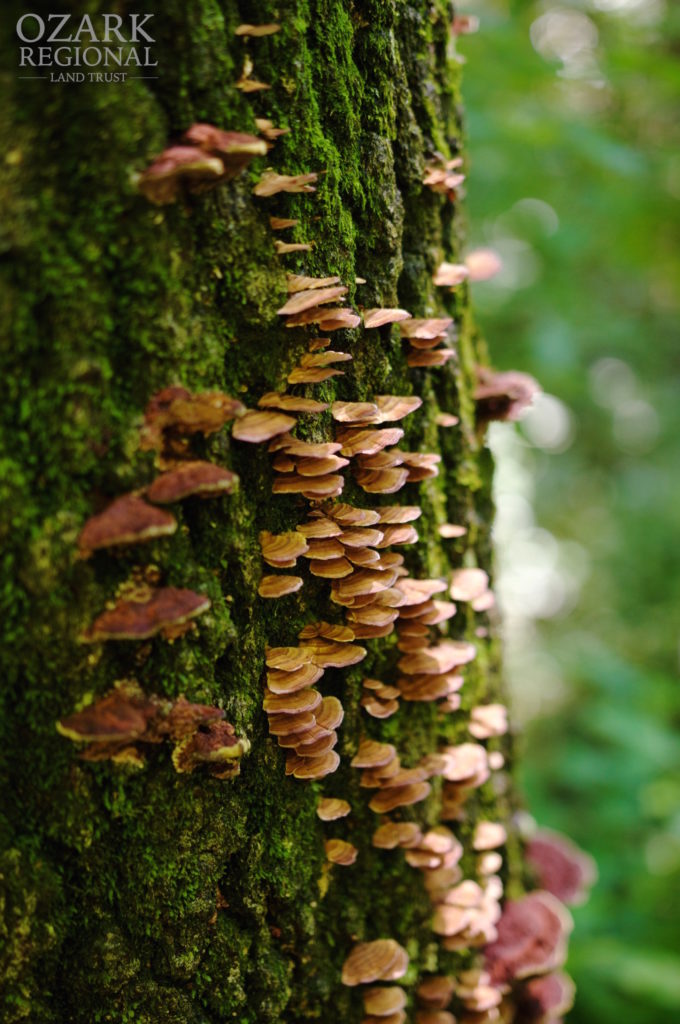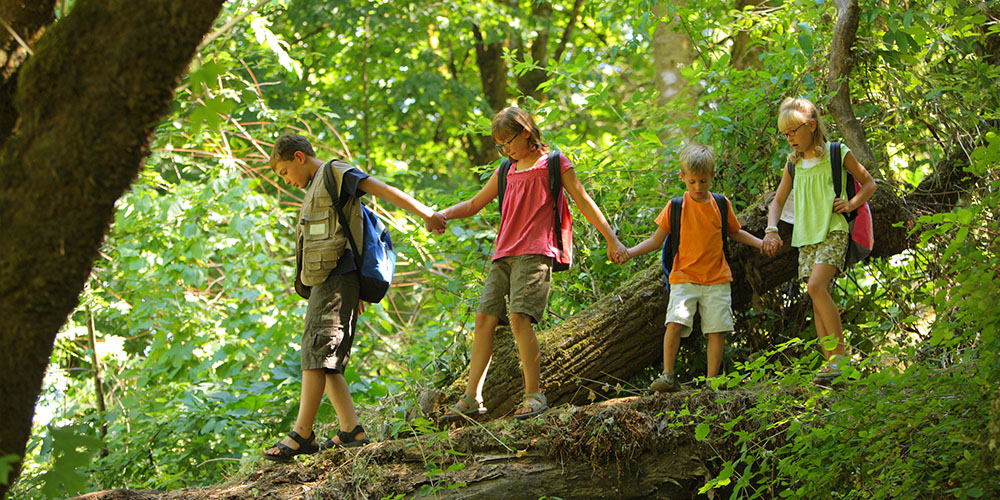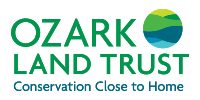What is a Land Trust?
A land trust is a nonprofit organization that, as all or part of its mission, actively works to conserve land by undertaking or assisting in land or conservation easement acquisition, by its stewardship of such land or easements, or by encouraging or assisting with good land use practices.
Are land trusts government agencies?
No, they are independent, non-profit organizations that work with landowners who are interested in protecting valuable natural resources and open space. But land trusts often work cooperatively with government agencies by acquiring or managing land, researching open space needs and priorities, or assisting with conservation programs/practices.
 What are the advantages of working with a land trust?
What are the advantages of working with a land trust?
Land trusts are closely tied to the communities in which they operate. Moreover, land trusts' non-profit tax status brings them a variety of tax benefits. Donations of land, conservation easements or money may qualify you for income and estate tax savings. Moreover, because they are private organizations, land trusts can often be more flexible than public agencies – and can act more quickly – in saving land from development.
What does a land trust do?
Local and regional land trusts, organized as charitable organizations under federal tax laws, are directly involved in conserving land for its natural, recreational, scenic, historical and productive values. Land trusts can purchase land for permanent protection, or they may use one of several other methods, including:
- Accepting donations of land or the funds to purchase land.
- Accepting the donation of a conservation easement which permanently limits the scope of development that can take place on the land.
In some instances, land trusts may have funds to purchase land, conservation easements or implement conservation practices.
I first heard about land trusts just a few years ago. Are they new?
The earliest land trusts were formed over a century ago, but significant growth in their numbers and scope of work has taken place in the past several decades. In 1950, just 53 land trusts operated in 26 states. Today, more than 1,700 land trusts operate across the country.
What has contributed to the huge growth in the number of land trusts?
People are tremendously concerned about the loss of open space in their communities. They see subdivisions supplanting the open spaces where they once walked and hiked, and they want to know how they can save the green spaces that make their communities unique. They turn to land trusts as the local entities that have been set up to conserve land.
What is a Conservation Easement?
A conservation easement is a legal agreement between a landowner and a land trust that permanently limits uses of the land in order to protect its conservation values. The landowner continues to own the land and may sell it or pass it on to heirs, but the conservation easement remains in place forever. When you donate a conservation easement to a land trust, you give up some of the rights associated with the land. For example, you might give up the right to build additional structures, while retaining the right to grow crops and raise cattle. Future owners also will be bound by the easement's terms. The land trust is responsible for making sure the easement's terms are followed. Conservation easements offer significant flexibility. An easement on property containing rare wildlife habitat might prohibit any development, for example, while one on a farm might allow continued farming and the building of additional agricultural structures. An easement may apply to just a portion of the property, and need not require public access.
Conservation easements offer significant flexibility. An easement on property containing rare wildlife habitat might prohibit any development, for example, while one on a farm might allow continued farming and the building of additional agricultural structures. An easement may apply to just a portion of the property, and need not require public access.
For example, you might give up the right to build additional structures, while retaining the right to grow crops and raise cattle. Future owners also will be bound by the easement's terms. The land trust is responsible for making sure the easement's terms are followed. Conservation easements offer significant flexibility. An easement on property containing rare wildlife habitat might prohibit any development, for example, while one on a farm might allow continued farming and the building of additional agricultural structures. An easement may apply to just a portion of the property, and need not require public access.
Conservation easements offer significant flexibility. An easement on property containing rare wildlife habitat might prohibit any development, for example, while one on a farm might allow continued farming and the building of additional agricultural structures. An easement may apply to just a portion of the property, and need not require public access.
Why should I grant a conservation easement to a land trust?
People donate conservation easements first and foremost because they love their land and want to protect it from inappropriate development. As a side benefit, landowners can often realize significant tax savings in conjunction with their donation. If the donation benefits the public by permanently protecting important conservation resources and meets other federal tax code requirements, it can qualify as a tax-deductible charitable donation. The amount of the donation is the difference between the land's value with the easement and its value without the easement. Perhaps most important, a conservation easement can be essential for passing land on to the next generation. By removing some or all of the land's development potential, the easement lowers its market value, which in turn lowers estate tax. Whether the easement is donated during life or by will, it can make a critical difference in the heirs' ability to keep the land intact.
Are conservation easements popular?
As of 2005, local and regional land trusts had protected a total of 12 million acres of land throughout the United States. Landowners have found that conservation easements can be flexible tools, and yet provide a permanent guarantee that the land won't ever be developed. Conservation easements are used to protect all types of land, including coastlines; farm and ranchland; historical or cultural landscapes; scenic views; streams and rivers; trails; wetlands; wildlife areas; and working forests.
How can a conservation easement be tailored to my needs and desires?
An easement restricts development to the degree that is necessary to protect the significant conservation values of that particular property. Landowners and land trusts, working together, write conservation easements that reflect both the landowner's desires and the need to protect conservation values. In many cases, current uses of the land such as farming or forestry continue unabated while the conservation easement prevents intensive development in the future.
What steps do I take to donate a conservation easement?
First, contact a land trust in your community to become acquainted with the organization and the services they can provide. Explore with them the conservation values you want to protect on the land. Discuss with the land trust what you want to accomplish, and what development rights you may want to retain. For example, you may already have one home on your property and want to preserve the right to build another home. Always consult with other family members regarding an easement, and you should consult with your own attorney or financial advisor regarding such a substantial decision.

How long does a conservation easement last?
Conservation easements "run with the land," binding the original owner and all subsequent owners to the easement's restrictions. Only gifts of perpetual easements can qualify for income and estate tax benefits. The easement is recorded at the county or town records office so that all future owners and lenders will learn about the restrictions when they obtain title reports.
What are a land trust's responsibilities regarding conservation easements?
The land trust is responsible for enforcing the restrictions that the conservation easement spells out. Therefore, the land trust monitors the property on a regular basis – typically once a year – to determine that the property remains in the condition prescribed by the easement. The land trust maintains written records of these monitoring visits, which also provide the landowner a chance to keep in touch with the land trust. Many land trusts establish endowments to provide for long-term stewardship of the easements they hold.
What are the economic impacts to my community of conserving open space?
Many reports have shown that conserving open space in communities around the U.S. attracts jobs, enhances property values, and saves billions in government costs. Simply put, communities that protect their natural environment are the places where people want to live.
For more information about Ozark Regional Land Trust and how to conserve your land Contact:
Larry Levin
Executive Director
[email protected]
(314) 420-0460
Abigail Lambert
River Stewardship Director
[email protected]
(314) 283-5759

